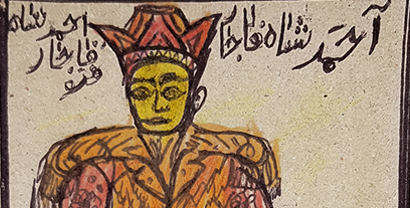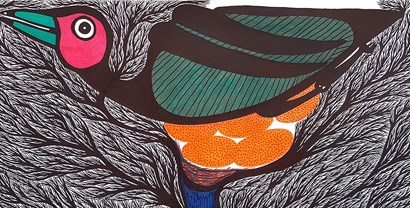The 8th Annual Outsider Art Exhibition
Group Exhibition
February 18 — March 01, 2022
When any kind of value is given to a center, the things that are on the margins, located far from the center, lose at least some credibility and are considered a variant of standard deviation. This is usually done by a dominant upper-class group, and, as a result, the potential of minorities in society, because of their unconventional and unique characteristics, is placed in a low and insignificant status and positioned in marginalized categories.
“Social Outsiders” come to be as a result of discords, conflicts, and contentions within societies. It is the loss of a sense of belonging to a larger group, being deprived of contributing to social institutions, and a conflict of interests of a society as a whole, leading to a sense of abandonment and social separation. For almost a century, the recognition of the achievements of those with natural talent and vision, who have had an undeniable impact on the history of modern art, has been disputed by academies, museums and other institutions who often consider the works of such creators as amateurish, inept, ugly, and unprofessional.
Even when the art world paid attention to creators outside the definitions of the dominant culture, who, with their instinctive behavior and knowledge, challenged the artistic, historical, and conventional contexts, they generally placed them in marginal, remote categories. They did not consider the works of this kind of art creators to be in line with the dictated logic and the reproduction of stereotypes. What is the purpose behind such behavior and resistance? Are there benefits to putting this type of artists in a minority category? What is the presupposition of a gallery owner, an audience, a critic, a teacher, a collector, etc. as to whether a work of art is good or bad? What does it mean to be good and serious? By what logic is a work considered bad?
The truth is that an outsider artist does not create his or her work for presenting, selling, or being reviewed, and certainly pays no mind to the mainstream concerns. However, many trained artists envy the authenticity, frankness, and boldness of such artists while they appropriate their technique and their means of expression. With all the resistance that some critics, historians, and art theorists have shown due to sociological, historical and cultural values, yet outsider Art is moving strongly in parallel with mainstream art.
The more a society expands, the more conceivable it will be to form multiple social groups in it, and it is diversity that, once accepted, moves the society forward. Taking place for its 8th edition this year, the aim of the annual Outsider Art exhibition is to challenge the presupposition and conventional frameworks.
















